OUTFIT
- Tee: @forthehomies
- Denim: @YSL
- Boots: @timberland
- Cap: @amongstfew
Most people who grew up in Kuwait in the 90s and who were into Hip Hop preferred West Coast Rap. It soon became a music culture of choice for many hip hop fans who grew up around me. Dr. Dre's “The Chronic” album was on almost every kid’s playlist. Ice Cube's “Predator” blasted through ear phones with tracks like ‘It was a good day’. Snoop soon followed with “Doggystyle” which not only became a part of our music scene but also further solidified the influence LA rap had on us.
Then came along Tupac Shakur. A larger than life character whose lyrics generated an attitude in the form of protest music nobody had ever considered before. His reputation as a revolutionary rapper was established through him being unafraid to write about his vulnerabilities as well as his rebellious views against the government and several political authorities.
Straight out of jail in 96’, Tupac made his presence known as a West Coast rapper by signing with LA based, Death Row Records.
In his epic (certified classic) album “All Eyez On Me”, he departed from his introspective style and made tracks that were regarded as celebrations of his new lifestyle in California. Suddenly everyone was throwing up W signs, wearing bandanas and rocking Filas. The dream car to have was the Jaguar XJS V12 shown in a picture on the leaflet of his CD. Kids at my school were claiming ‘Thug Life’ and saw Snoop and Pac as the Prince and King of hip hop.
I was in the 11th grade when I met Eddie, a kid who had moved to Kuwait from Toronto. He was mostly quiet but approachable and friendly. He had a certain vibe to him that made him different to everyone else, especially those kids who had moved to Kuwait from other countries. I remember him rocking his Timbs when everyone was in their Chucks and Airmax 95s. We slowly got to know each other and soon established a friendship through exchanges of our tastes in music, where he recommended I listened to groups like A Tribe Called Quest, De La Soul, and Wu-Tang Clan. Surprisingly he didn’t see Tupac as the leading figure of the kind of hip hop music I had grown to admire and respect. In his eyes it was another legendary rapper called Notorious BIG aka Biggie Smalls who sat on the throne.
When Eddie suggested that I listened to Biggie’s album called Life After Death I copped the CD and played the album, starting with the first track ‘Somebody’s Gotta Die’. I remember the moment I heard his thick deep rumbling, his larger-than-life voice but also the smooth delivery of the verses that flowed from the track I felt he was an artist that had truly mastered all the hemispheres of the music genre. It was like nothing I had ever heard.
I went through that album from beginning to end, spending days, weeks and months listening till the only album I was listening to was probably "Life After Death". His multiple flows and verses were impeccable, and his punchlines were always of the highest calibre. The friends in my circle were also listening to the Brooklyn rapper and shifting their musical tastes to hip hop coming out of the East Coast.
At the same time Puff Daddy was then the hottest producer in the game, Mase’s Harlem World was a hit, and Junior Mafia was coming up. Puffy’s (now known as Diddy) label- Bad Boy Entertainment was the new movement and Biggie was at the forefront.
Born as Christopher Wallace, he was raised by a single mother in Bedford Stuyvesant, Brooklyn New York, dropped out of school to sell drugs in order to make ends meet. Coming up as a (notorious) rapper on the streets of Bedford, he was discovered by Puffy and signed to a record deal. In 1997, he was gunned down and killed at the early age of 24 while in Las Vegas.
OUTFIT
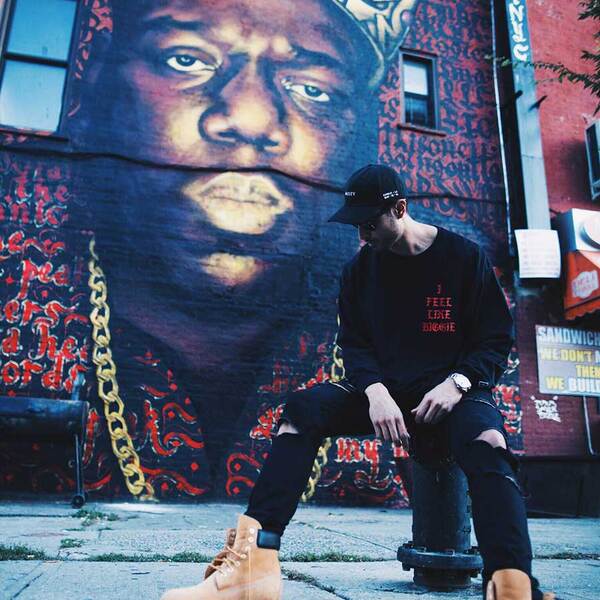 'King of NY' @nycs0ul
'King of NY' @nycs0ul
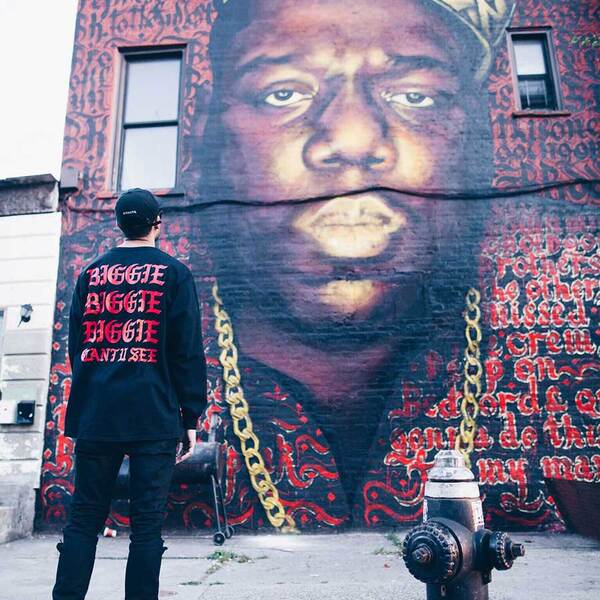 'BIG' @nycs0ul
'BIG' @nycs0ul
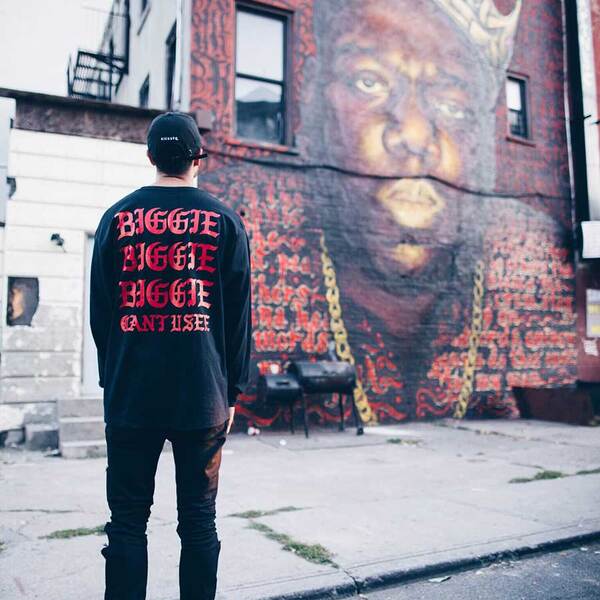 'GOAT' @nycs0ul
'GOAT' @nycs0ul
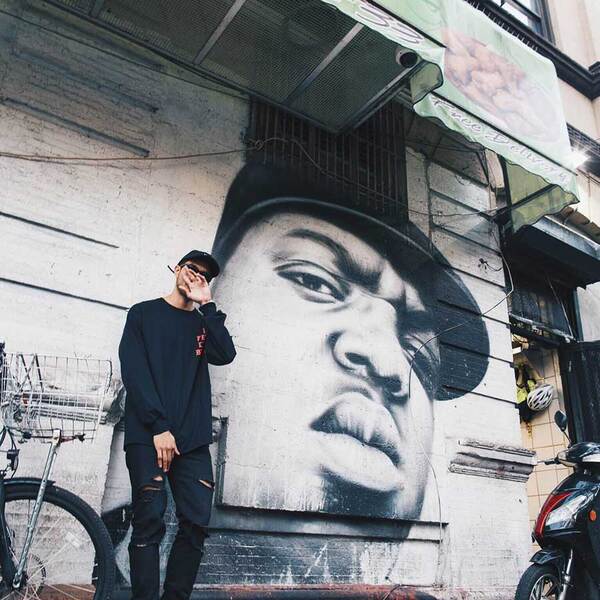 'Biggie Smalls' @nycs0ul
'Biggie Smalls' @nycs0ul
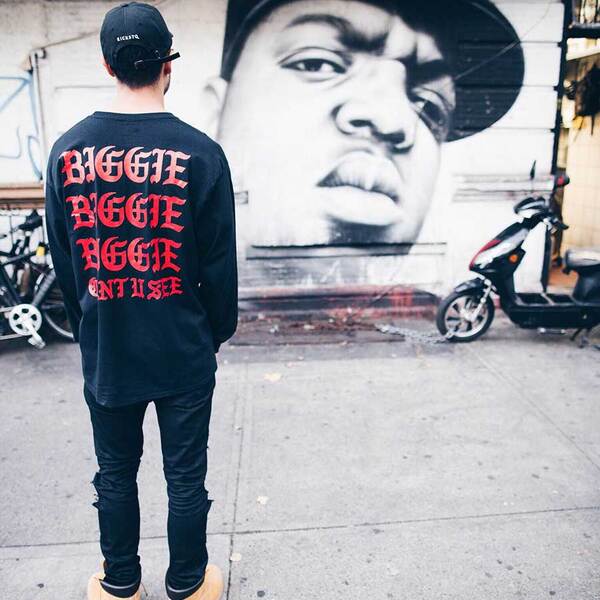 'Frank White' @nycs0ul
'Frank White' @nycs0ul
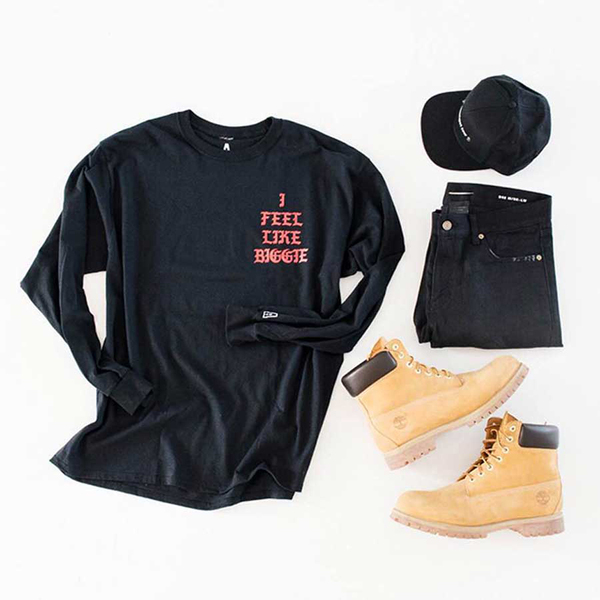 @outfitgrid
@outfitgrid
During my stay in New York this September, I visited Biggie’s neighbourhood of Bedford, Brooklyn- reliving a time-lapse experience through his personal narratives. From passing by his familiar bodegas and Bedford Avenue grocery store, in front of where he delivered one of his most iconic freestyles, to soaking up images of graffiti all around me.
Then I came across one of the most enduring icons dedicated to him located in Bedford. It is a well-known brightly-hued mural whose story is tagged with lyrics in red and gold calligraphy-and some from his single Juicy…’it was all a dream, I used to read word up magazine’ in his debut album that established him as a titan. Not only does the giant portrait transform the building into an homage to the hip-hop legend’s origins but also emotionally connects you to an inevitable conclusion that still knocks the breath out of you…’ stay far from timid/ only make moves when ya heart's in it/ and live the phrase Sky's The Limit’
In appreciating the force of Biggie’s album “Life After Death”, and later exploring his first album “Ready To Die”, I remember realising that the meaning and significance of their social messages were deeply rooted in the reality of a lyrical storyteller. He mixed autobiographical details about crime and violence, telling us how he felt while making a living as a drug dealer. But I also had a sense of emotional honesty infused into his loose easy flow and delivery of multiple rhymes, with head-knocking metaphors that put you in a trance and made you marvel at the semantics- ‘I leave my competition, respirator style/climb the ladder to success escalator style’. Biggie’s style of rap and lyrical execution helped inspire and innovate the culture of hip hop and even elevated the genre to a new definition of economic success.
Truly if you’re a purveyor of hip hop, Biggie’s music is the equivalent to lyrical royalty.If hip hop isn’t your thing, that’s fine too — it’s about sharing personal history with the world, done with creativity and originality, and which involves the impact you’re making in it.
Video and Pictures: @nycs0ul
Music: @Thephronetic
For better web experience, please use the website in portrait mode
OK